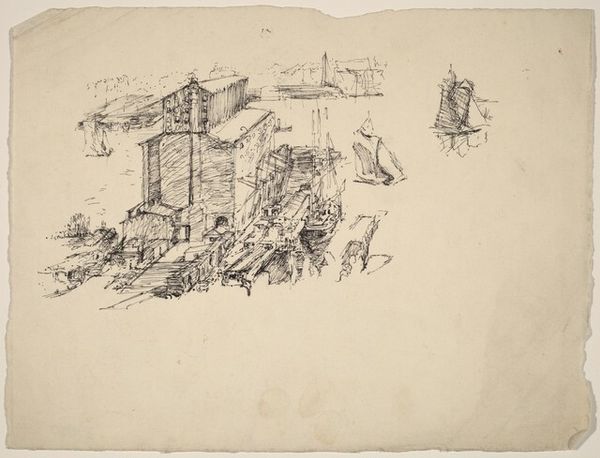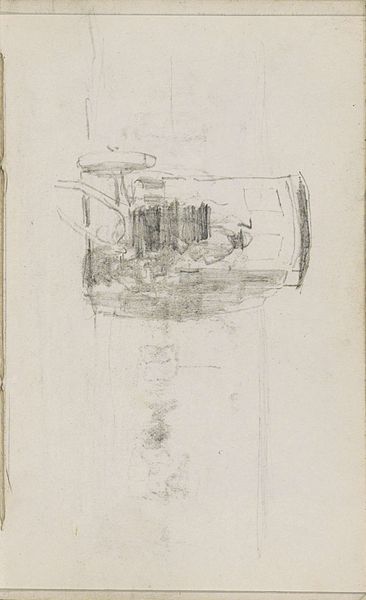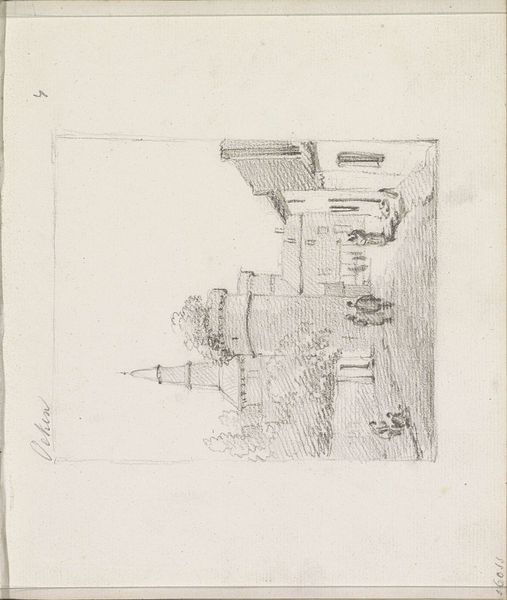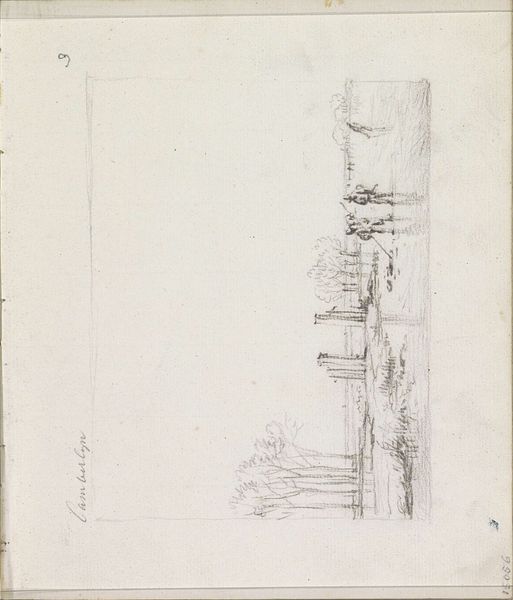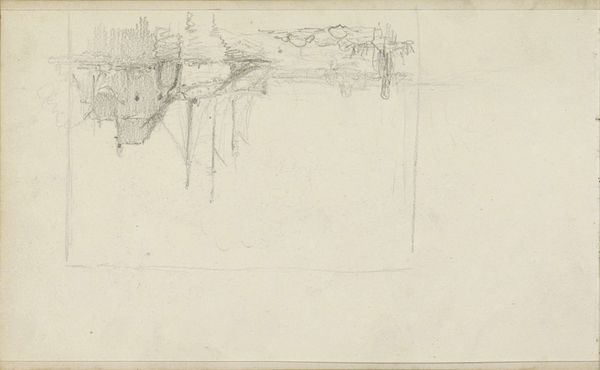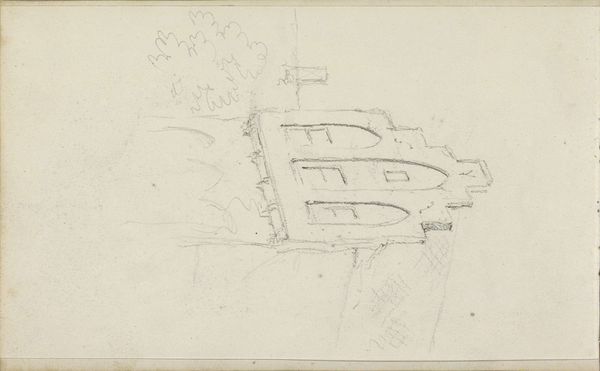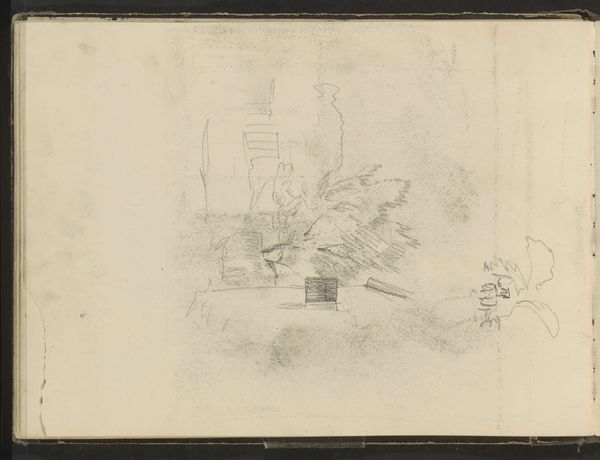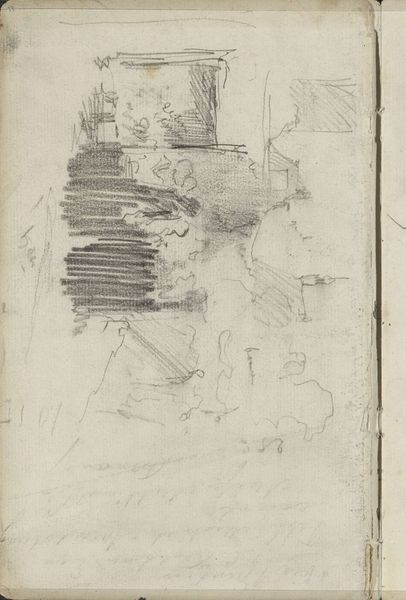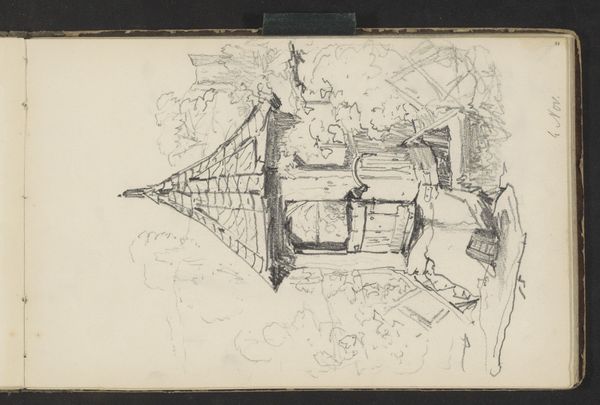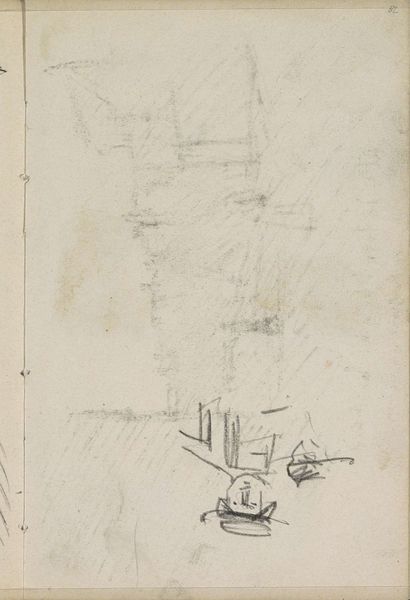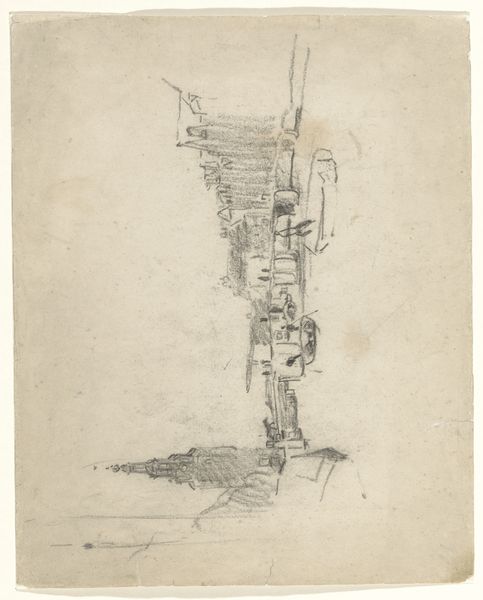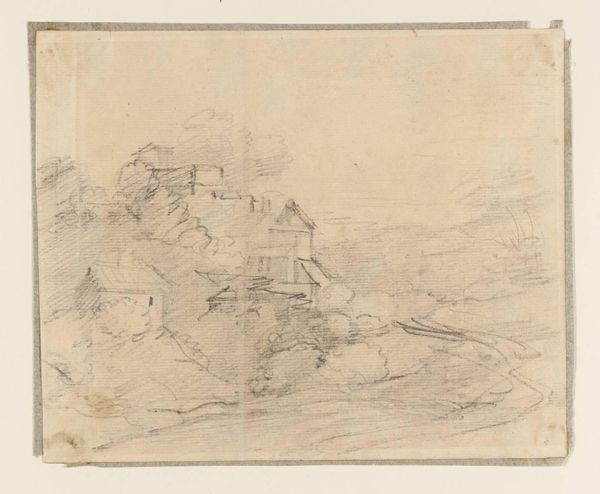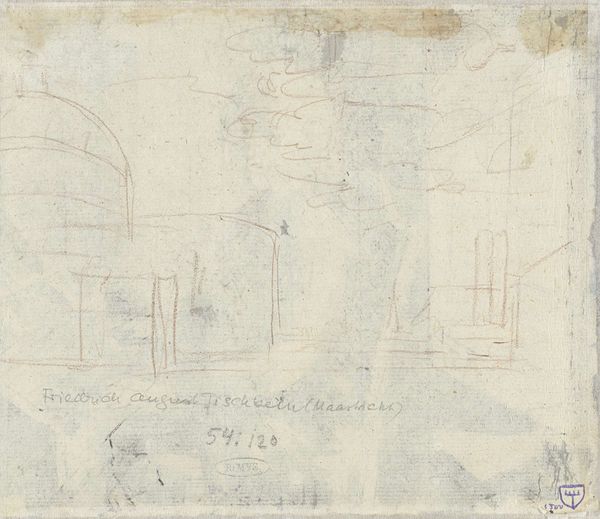
Dimensions: support: 192 x 274 mm
Copyright: CC-BY-NC-ND 4.0 DEED, Photo: Tate
Curator: Here we have James Duffield Harding’s Study of Grass-Grown Ruins, a sketch held at the Tate. Editor: It's stark, almost skeletal. The lines are so fragile, like memories fading. Curator: Harding was fascinated by the picturesque, and here we see ruins consumed by nature, a potent symbol of time's passage and the ephemeral nature of human endeavor. Editor: Absolutely. And consider the social context—this fascination with ruins often coincided with periods of rapid industrialization, a longing for a romanticized past. Curator: The ruin as a symbol, not just of decay, but of resilience, of nature's triumph. Grass reclaiming stone. The cyclical return. Editor: A potent reminder that even the most powerful structures are ultimately transient. It makes you think about what we build and what we leave behind. Curator: Indeed, the work lingers in the mind, prompting reflections on history, memory, and the enduring power of the natural world. Editor: Harding's vision certainly offers a stark and enduring image, relevant even now as we grapple with our own legacy.
